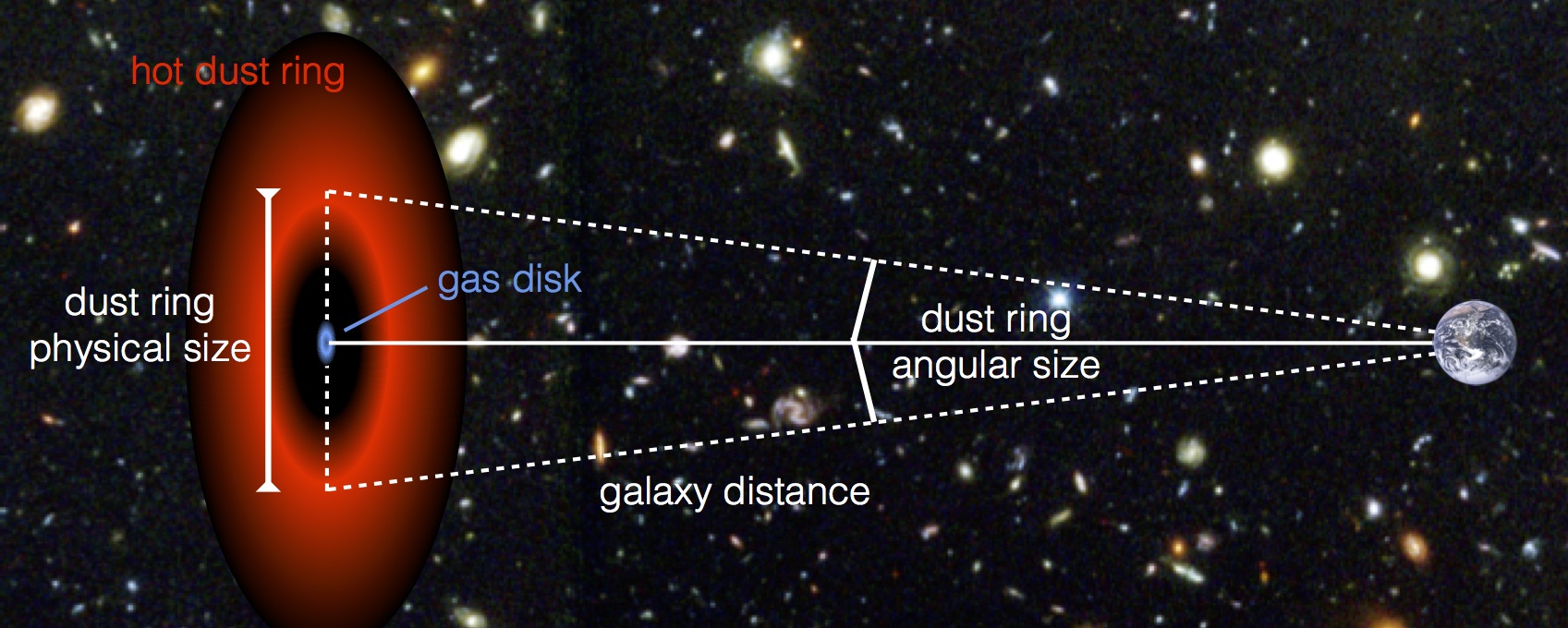Measuring The Distance To The Eye of Sauron
A dust-parallac distance of 19 megaparsecs to the supermassive black hole in NGC 4151
(Hoenig et al. 2014, Nature, 515, 528)

Abstract
The active galaxy NGC 4151 has a crucial role as one of only two active galactic nuclei for which black hole mass measurements based on emission line reverberation mapping can be calibrated against other dynamical techniques. Unfortunately, effective calibration requires accurate knowledge of the distance to NGC 4151, which is not at present available. Recently reported distances range from 4 to 29 megaparsecs. Strong peculiar motions make a redshift-based distance very uncertain, and the geometry of the galaxy and its nucleus prohibit accurate measurements using other techniques. Here we report a dust-parallax distance to NGC 4151 of megaparsecs. The measurement is based on an adaptation of a geometric method that uses the emission line regions of active galaxies. Because these regions are too small to be imaged with present technology, we use instead the ratio of the physical and angular sizes of the more extended hot-dust emission as determined from time delays and infrared interferometry. This distance leads to an approximately 1.4-fold increase in the dynamical black hole mass, implying a corresponding correction to emission line reverberation masses of black holes if they are calibrated against the two objects with additional dynamical masses.
Authors: S. F. Hoenig, D. Watson, M. Kishimoto, & J. Hjorth
Press Releases and Coverage
'Eye of Sauron' provides new way of measuring distances to galaxies
Main release by the University of Southampton'Eye of Sauron' provides new way of measuring distances to galaxies
Keck Observatory
Using supermassive black holes to measure cosmic distances
Niels Bohr Institute, University of CopenhagenAn (incomplete) summary of the press coverage can be found at the University of Southampton Storify page.
Please also check out the short video produced by the BBC.